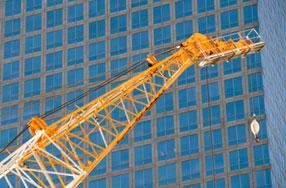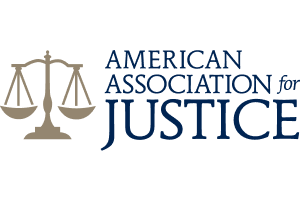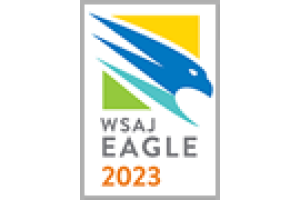Crane Injuries
Crane Injuries: Hire Experienced Washington State Lawyers Who Know the Law
The law requires construction contractors to make safe crane operation a high priority. By law, safe crane operation must be a high priority on every work site. There are many different types of cranes, but they all share the same common function: cranes move large and heavy loads through the air from one point to another. That means that anything within reach of the moving crane that gets in the way of the crane or its payload will be crushed.
Crane Operators Must be Highly Trained and Certified

A Washington State statute, RCW§ 49.17.430, requires that each and every crane operator meet the following minimum standards:
- Possess a crane operator certificate, for the type of crane operated, issued by a nationally recognized accredited crane operator testing organization that administers written and practical examinations to operators, who must pass the examinations before being certified;
- Have 2,000 hours of documented operating experience as an apprentice crane operator on a particular type of crane before being allowed to receive a crane operator certificate for that type of crane;
- Pass a substance abuse test conducted by a recognized laboratory service; and
- Be recertified every five years.
Job Sites Must be Checked for Potential Blind Spots and Other Crane-Related Hazards
Prior to starting crane operations, the contractor or entity in control of the job site must conduct a walk through identify any potential hazards. If crane operations must take place in an area where the crane’s boom can come into contact with power lines, then the lines must be de-energized, or the lines must be covered, or a person must be designated as a “spotter” to do nothing but stand and watch to make sure that the crane boom stays away from the power lines, while maintaining direct contact with the crane operator (typically via a dedicated radio channel) at all times. If a load must be moved at a site where the crane operator does not have complete and clear line of sight view of the load and the landing area at all times, then a dedicated “signal man” must be assigned to a position from which the signal man has a clear line of sight view of the load and the landing area at all times, along with a method of signaling to the crane operator at all times.
There are Different Safety Regulations That Apply to Different Cranes
There are different and varied Washington Industrial Safety and Health Act [WISHA] regulations that apply to articulating boom cranes, derrick cranes, gantry cranes, portal cranes, side-boom cranes, and tower cranes, among others. The law requires that each type of crane have certain safety devices, that each type of crane be assembled, maintained, repaired, and regularly inspected by qualified personnel, and that all wire ropes used for rigging be of a certain strength and subject to regular inspection and replacement. Additionally, the methods by which payloads are secured, put in a lifting sling, and then attached to the crane’s lifting hook are all highly regulated.
Dropped Loads are Typically Caused by Negligence
In the event of equipment failure, which typically results in a dropped load, the primary focus of any post-injury investigation should be whether any of the WISHA safety regulations for assembling, maintaining, repairing, inspecting or replacing equipment or rigging components was violated.
When a load comes apart and is dropped, then the primary focus of the post-injury investigation should be whether the rigging crew had the training and experience to properly bundle and attach the load to the crane, and whether they used the appropriate rigging method for safely hoisting the load.
When Workers are Struck by a Crane or Its Payload, It’s the Operator’s Fault
By far the most common injuries associated with cranes are crushing type or electrical shock type injuries to workers on the ground. These traumatic events can be caused by crane control malfunctions, but more often are due to operator error. Almost all of these unfortunate events can be eliminated if crane operators follow the rules that they are trained to follow:
- Before operating any crane, make sure the crane has been properly inspected and certified for operation
- Before operating any crane, personally perform an operational inspection as required in the operator’s manual for that piece of equipment;
- Before operating any crane, test the warning signal device to make sure it is working properly;
- Never permit an unauthorized person to act as a spotter or signal man;
- Make sure to always have a direct and clear view of the load and the landing area or of the signal man;
- Make sure to always have clear and constant communication with the signal man either through hand signals or a dedicated radio line that is not used by others;
- Always activate warning signals before and during moves; and
- Never lift a load over a worker.
Our Law Firm has Successfully Handled Crane Injury Cases
At Kraft Davies Olsson PLLC we have successfully litigated cases involving negligent crane operation and improper rigging that resulted in severe crushing injuries, amputations, and electrocutions, on land and at sea. We are experienced personal injury attorneys and we provide aggressive representation to our clients (injury victims and family members pursuing wrongful death claims), whose lives have been turned upside down by crane accidents.
If You or a Loved One was Injured in Washington State, We Can Take Your Case
Kraft Davies Olsson PLLC is a Seattle-based law firm, but we represent injured workers from all over the state, in every county and federal court in Washington. If you hire Kraft Davies Olsson PLLC, you will pay us no fee unless we win financial compensation for you!
Don’t Wait When You Can Get Our Advice for Free – Call Now!
If you have been injured or lost a loved one in a crane accident, you need to protect yourself from further injury by learning about your legal rights. To speak to an experienced lawyer and get a free, no obligation consultation, call Kraft Davies Olsson PLLC today at 206.624.8844. Alternatively, you may email your inquiry to us by clicking here.







